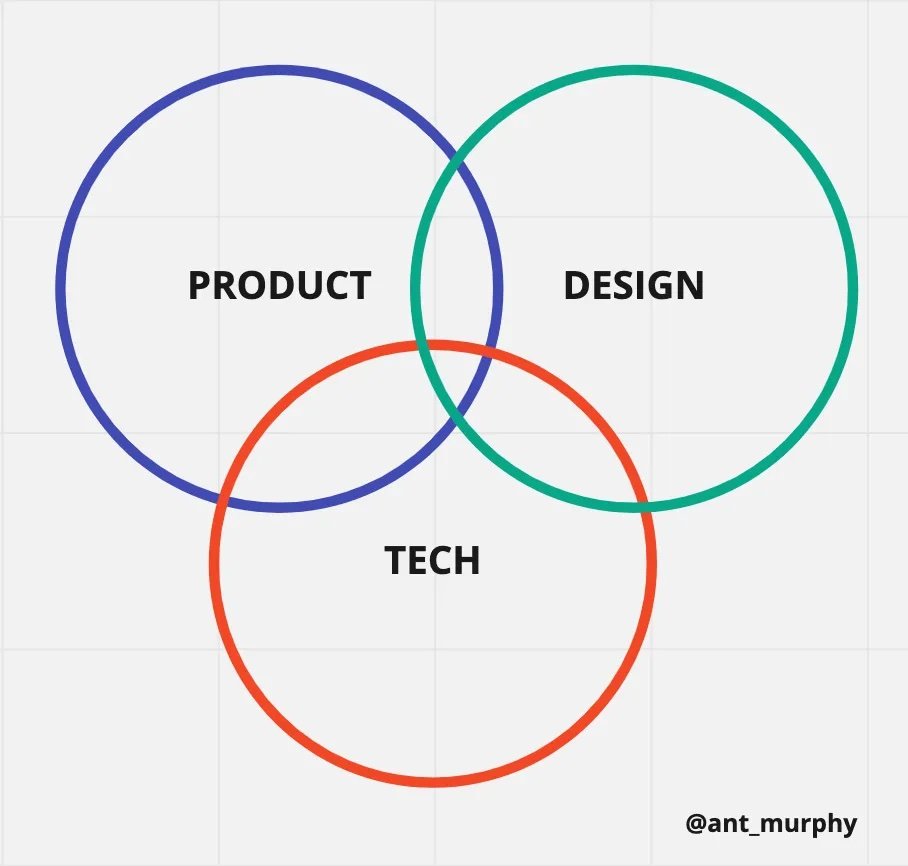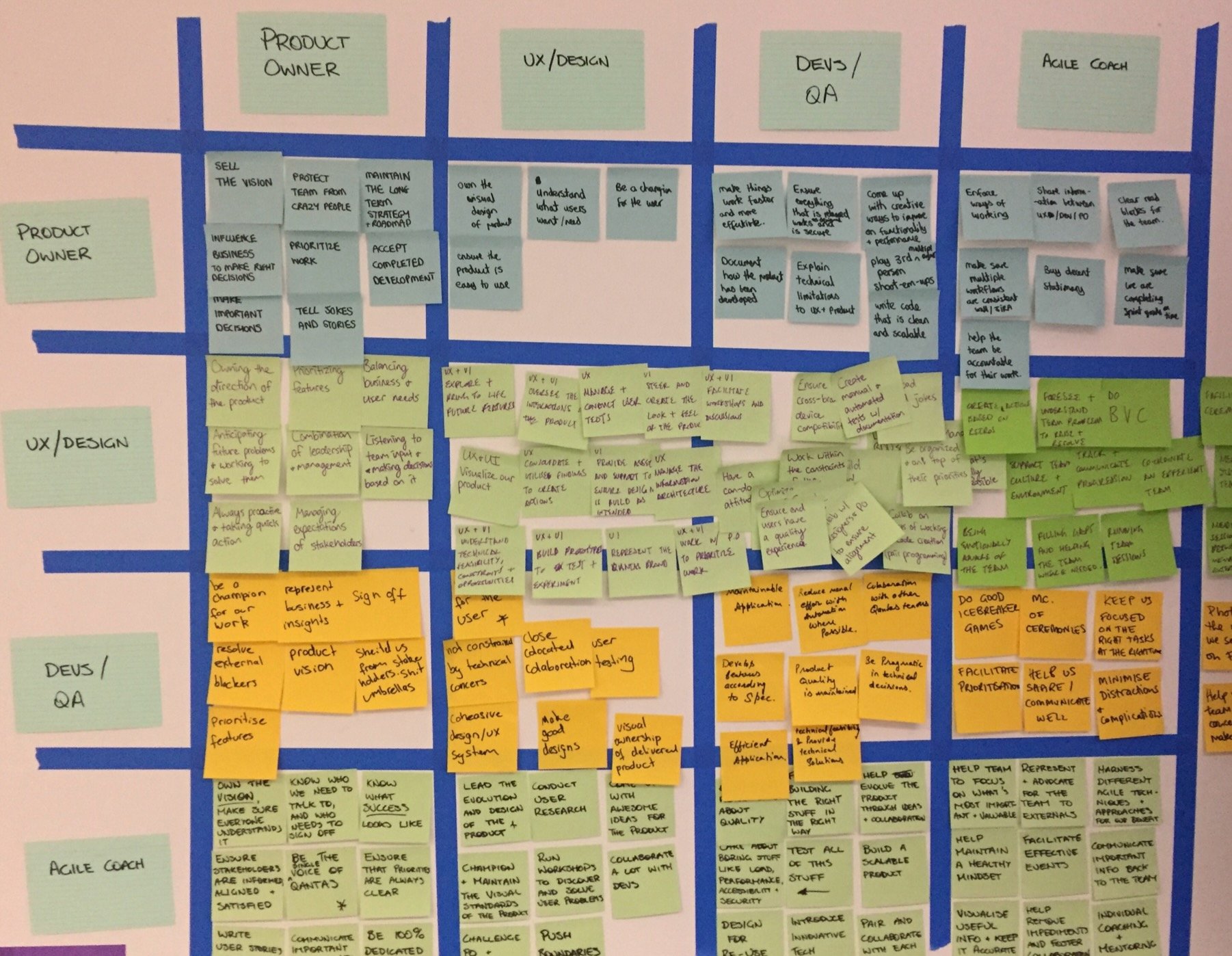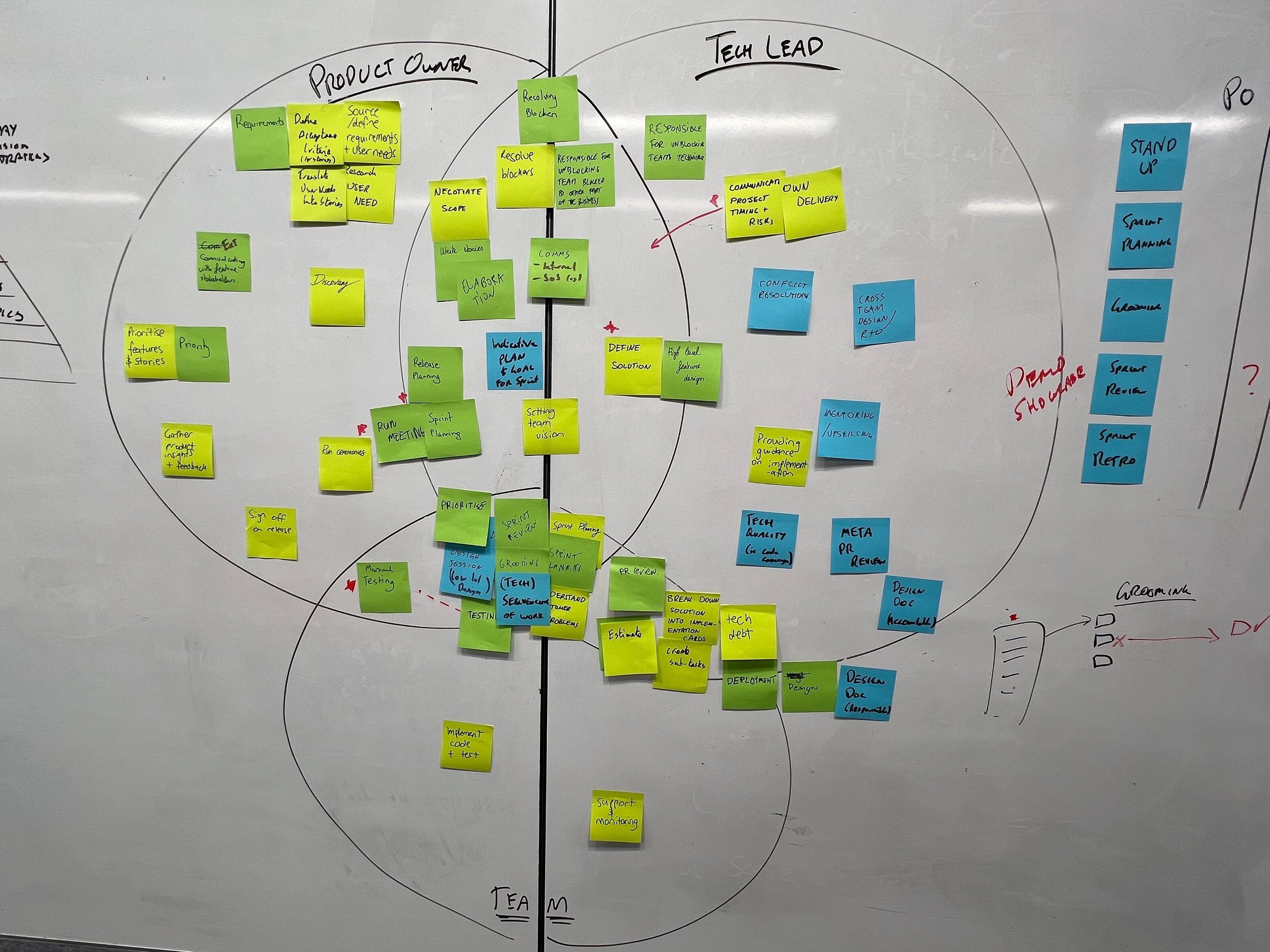Building Greater Role Clarity
A common challenge organizations face as they scale or when they go down the product transformation route is clarifying roles.
Either it’s caused by the introduction of new roles, like Product Marketing Managers, Growth Product Managers, etc, or having to rebaseline existing roles, like how we think about the Product Manager role.
For whatever reason, a common pattern seems to be the desire to split roles and ownership between the 'WHAT' vs 'HOW'.
Now this sounds great. Clear and simple, but the challenge with this is WHAT and HOW are largely dependent on the level of optics you’re viewing them through.
The challenge with this is WHAT and HOW are largely dependent on the level of optics you’re viewing them through.
For example.:
Does WHAT mean…
defining the business outcome?
defining the customer problem to solve to achieve the outcome?
the scope and requirements?
both? neither?
And by HOW do we mean…
work out how to achieve business outcome X?
or; how to build feature Y?
When you start to unpack it, there’s actually quite a large spectrum of HOWs and WHATs (we could also throw in WHY in there too).
Now you might be wondering, why is any of this a problem.
In startups, we don’t have formal roles, and we do fine. And besides, we don’t want to put people into boxes either.
And while both are completely true. A lack of clarity around roles also creates its own issues.
No knowing whether you’re doing the right thing or misaligned expectations.
Unclear career progression (which is also one of the top reasons why people leave companies).
Stepping on each other’s toes.
The constant effort to navigate ambiguous boundaries.
and the cognitive load caused by the lack of clarity.
Now, by no means am I advocating for rigid roles and responsibilities. I’ve been careful to use the term clarity over responsibilities because we actually want to foster shared responsibility and encourage collaboration.
If you want to learn more about how you can encourage more collaboration and shared responsibility read this post here on the topic.
Building Greater Role Clarity
I’m cool if you want to continue using the WHAT vs HOW terminology, but you have to clarify what you mean by each of them.
A great illustration of this (and arguably a case to move away from ambiguous terms like HOW and WHAT) is John Cutler’s Mandate Levels.
Credit: John Cutler, Mandate Levels. “#5: Comparing teams with rigid and looser role boundaries.”You can read more about John Cutler’s Mandate Levels here, he has a video walkthrough at the end of the post and a great Miro board that you can use to help facilitate a conversation about roles, team boundaries and mandate levels.
But to illustrate how this can be a better alternative, rather than saying you’re responsible for ‘WHAT’, we can define what we mean by that - e.g. you’re responsible for defining how we “improve the experience for '[customer segment]” which is very different than how to “solve this open-ended customer problem”.
I’ve used John’s mandate levels before, and I think they’re fantastic for creating better clarity.
But if you’re fishing for some alternatives my go-to are the Role Expectation Matrix or what I’ve called the R&R Venn Diagram (for the lack of a better term for it).
Role Expectation Matrix
As the name suggests, the Role Expectation Matrix is a 2x2 matrix.
It works by putting everyone's roles along the X and Y axis.
We then discuss and define the expectations from one role to another. For example “what should a PM expect from a Designer” and “what can a Designer expect from a PM”.
How-to run a Role Expectation Matrix Workshop
Step 1: Create a 2x2 matrix with everyone's names or roles along the X and Y-axis.
Step 2: Explain the matrix and how the “to-from” expectations work.
Step 3: Silently brainstorm as a team what each team member believes the expectations from one role to another are.
Step 4: Group and discuss points of dissonance.
Again, the goal of a Role Expectation Matrix is not to come up with clearly defined role definitions; rather, it’s about creating clarity between how different roles interact with each other.
It’s a great activity to uncover some of those issues at the start with HOW vs WHAT.
You might find that one role is expecting a more concrete “WHAT” and the other is expecting them to be able to come up to a high optic level. No doubt this misalignment would be causing friction - “they’re not clear enough on the ask” and “they’re just not taking ownership”.
Example Role Expectation MatrixR&Rs Venn Diagram
In the spirit of embracing the overlaps between roles I like to also think about clarifying roles and ownership this way too.
How-to run a R&R Venn Diagram Workshop
Step 1: Draw several circles each overlapping and assign different roles into each circle.
Step 2: Silently brainstorm as a team what each person believes is in a specific roles remit vs what is a shared responsibility.
Step 3: Group and discuss points of dissonance.
Similar to the Role Expectation Matrix, the goal is to find points of dissonance and create alignment.
Again, what we want to do is get to a more granular level of detail than simply saying you own the WHAT vs HOW.
Example: R&R Venn diagram WorkshopRole clarity is a challenge that just about every organization that I know of has faced at some stage.
Either through rapid growth and the introduction of new roles and loads of people or through radical organizational change. Either way, creating role clarity is an ongoing process.
I might finish this week's post by saying don’t underestimate the value of organizational clarity (which includes roles).
For those in fast-growing companies or undergoing large-scale change, it might be worth slowing down to speed up. Take the time to create greater clarity because the longer you wait, the worse the problem gets.





